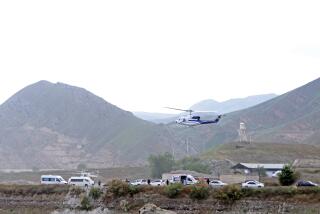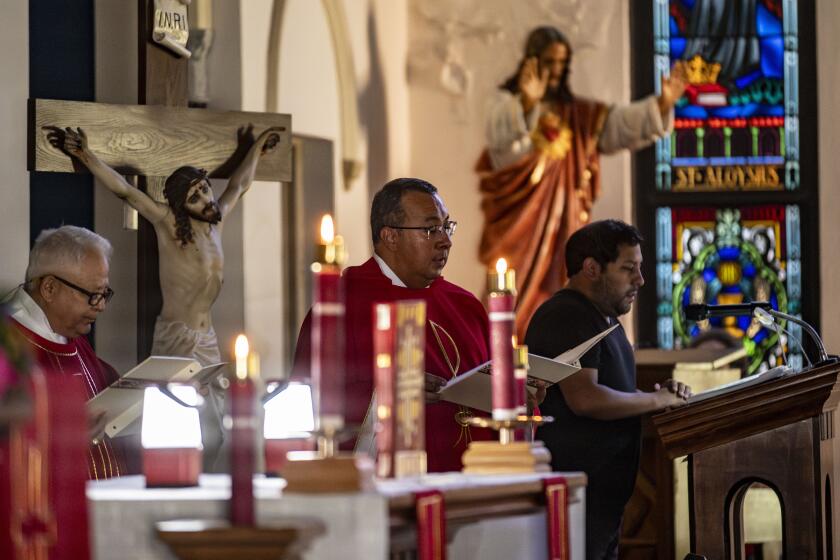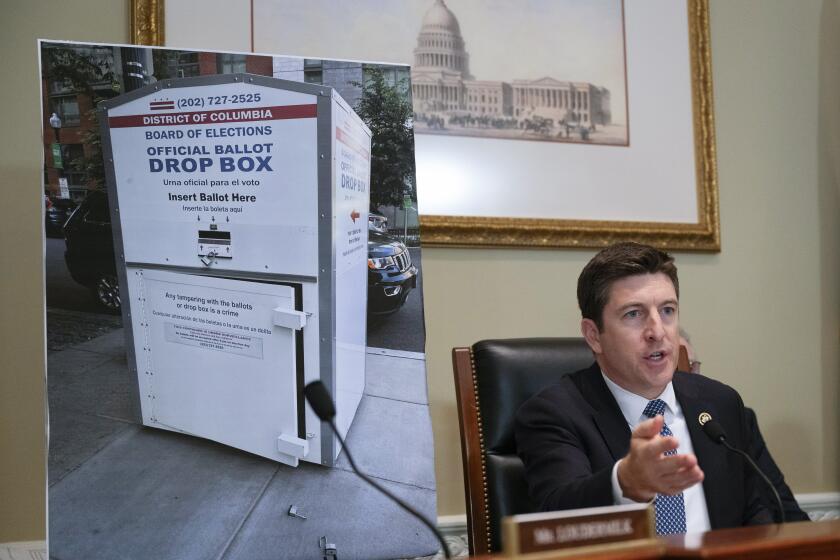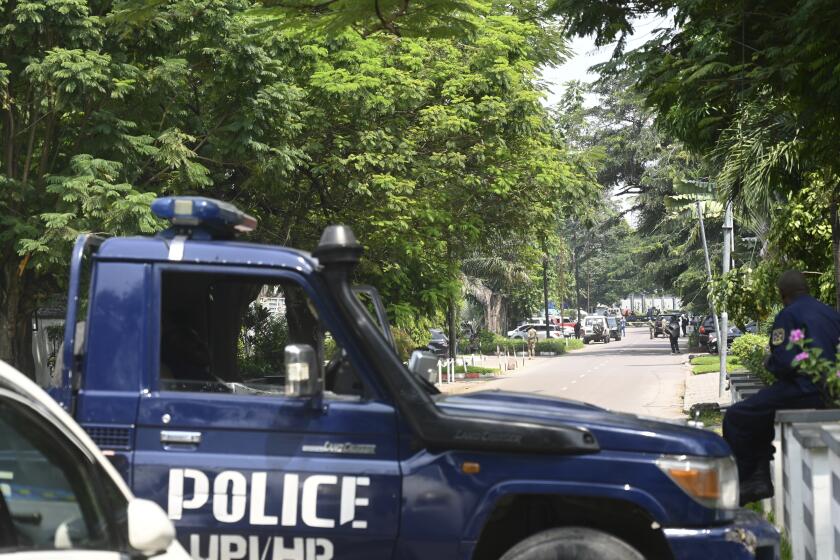Freight-Line Safeguards Fell Short
Checks and balances established by Burlington Northern-Santa Fe to make sure that train crews heed critical warning signals along the track failed to prevent Tuesday’s fatal crash of a freight train and a Metrolink commuter train, investigators said Thursday.
BNSF procedures call for the conductor and engineer aboard trains to call out the color of each track signal as they approach it, a two-voice system meant to ensure that signals are not missed.
The crew is also supposed to use a checklist to write down the color of each signal as it is passed, according to BNSF engineers.
Yet National Transportation Safety Board investigators said the two-man crew did not heed a yellow signal about two miles from the Placentia crash scene.
The signal should have been visible from as far as a mile away, according to one engineer who is familiar with the line.
The yellow light called for the crew to slow to 30 mph, but the train actually sped up to 48 mph, officials said. A minute and a half later, the crew encountered a red signal but couldn’t stop the train before it slammed into a double-decker Metrolink train, killing two passengers and injuring hundreds.
“Both [crew members] are supposed to observe for the signal,” said lead federal investigator Mike Flanigon.
“That’s one of the things, an area, that we’re certainly looking at and trying to understand ourselves.”
Investigators have ruled out mechanical problems and said there was no evidence of a fire or other on-board emergency that would have distracted the freight crew. They stressed that they have found no indication of criminal wrongdoing.
Investigators Thursday morning tested track conditions using equipment identical to that involved in the crash. They found that the signal lights were working and visible, though Flanigon said the skies might have been more overcast Thursday than on the day of the crash.
One locomotive engineer who has participated in dozens of accident investigations said the track approaching the signal lights does not have sharp curves or bends that might have obstructed the crew’s view.
Yet the train did not begin to slow until it reached the second light, indicating that the crew might not have reacted before seeing the Metrolink train on the track ahead, said the engineer, who spoke on condition he not be identified.
“I just don’t see how this could have happened,” the engineer said.
The freight-train engineer, Darrell Wells, 48, of Dana Point, and the conductor, Dean E. Tacoronte of Needles, both declined to comment.
Flanigon said that Wells had several years’ experience as a conductor, but only about one year of experience as an engineer.
He said the crew’s work shift did not exceed federal guidelines, although he noted that crew fatigue has been identified by the NTSB as a problem in different areas of public transportation.
Wells started work about 51/2 hours before Tuesday’s 8:10 a.m. crash and was off duty for the 221/2 hours before his shift began, BNSF work schedules show. Before that, Wells worked a 12-hour shift that ended about 4 a.m. Monday.
Tacoronte had been off for 101/2 hours before the shift began, the records show. He worked a seven-hour shift the day before the crash, and an eight-hour shift two days before.
Federal investigators questioned the crew members Thursday but declined to reveal what they said. Federal officials plan to review their personnel files, including their training, experience, medical histories and any prior incidents.
Blood tests administered immediately after the crash, a routine procedure after a major incident, showed no sign of alcohol use by any crew member.
Findings from the drug tests are expected to be released today. Two commuters were killed in the Tuesday crash: Robert Kube, 59, of Moreno Valley and Lawrence Sorensen, 48, of Riverside. Both men died from blunt-trauma injuries. Flanigon said 159 people were treated for injuries at 13 hospitals.
The investigation at the scene wrapped up Thursday, Flanigon said, and the first car from Train 809 was loaded aboard a flatbed truck to be shipped to a Metrolink yard for further study.
One of the questions is how passengers on Train 809’s first car were injured. Flanigon said investigators were interviewing passengers to determine where they were seated.
Some passengers on the train complained that their stomachs and torsos had slammed into the tables between the train’s benches.
“The other work that will be ongoing will be to determine the nature of the injuries, to look at where those people were sitting in the car, how they might have been injured,” Flanigon said.
“The idea [is] to look at the equipment design to identify anything that can ... improve the safety of the equipment.”
Initial findings could be completed in three months, and the final report in nine months to a year.
*
Times staff writers Daniel Yi, Scott Martelle, Janet Wilson and Mai Tran contributed to this report.
More to Read
Start your day right
Sign up for Essential California for news, features and recommendations from the L.A. Times and beyond in your inbox six days a week.
You may occasionally receive promotional content from the Los Angeles Times.







